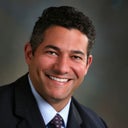Posted underMommy Makeover q&a
What type of Dr. should I see to diagnose if I need diastasis recti repair?
I am currently scheduled for a mommy makeover and am getting really scared. I really only NEED my diastasis repaired, but no one has officially diagnosed me with it. I told my PS everything, and I don't recall him saying "Yes, you do have diastasis and you NEED it repaired". I am having back problems lately that were never there before and I don't want to deal with ongoing issues due to this. What other type of Dr. could I see just to be diagnosed? I don't want to go thru this unnecessarily.
Answers (18)
From board-certified doctors and trusted medical professionals
Dr. Jeffrey E. Schreiber, MD, FACS

Dr. Jeffrey E. Schreiber, MD, FACS
Board Certified Plastic Surgeon
Answer
Dr. Thomas Fiala, MD, FACS, FRCSC

Dr. Thomas Fiala, MD, FACS, FRCSC
Board Certified Plastic Surgeon
Answer
Dr. Kenneth Hughes, MD

Dr. Kenneth Hughes, MD
Board Certified Plastic Surgeon
Answer
Dr. Gary M. Horndeski, MD

Dr. Gary M. Horndeski, MD
Board Certified Plastic Surgeon
Answer
Dr. Roxanne Sylora, MD

Dr. Roxanne Sylora, MD
Board Certified Plastic Surgeon
Answer
Dr. William T. Stoeckel, MD

Dr. William T. Stoeckel, MD
Board Certified Plastic Surgeon
Answer
Dr. Earl Stephenson, Jr., MD, DDS, MBA

Dr. Earl Stephenson, Jr., MD, DDS, MBA
Board Certified Plastic Surgeon
Answer
Dr. Richard Baxter, MD

Dr. Richard Baxter, MD
Board Certified Plastic Surgeon
Answer
Dr. Vincent N. Zubowicz, MD

Dr. Vincent N. Zubowicz, MD
Board Certified Plastic Surgeon
Answer
Dr. John J. Edney, MD
Dr. John J. Edney, MD
Board Certified Plastic Surgeon
Answer
More Mommy Makeover Questions
See all Mommy Makeover Q&AWE SEND PRETTY
EMAILS
What’s trending? Who’s turning heads? Which TikTok myths need busting? We’ve got you. No fluff, no gatekeeping—just real talk. Get our free, unfiltered newsletter.